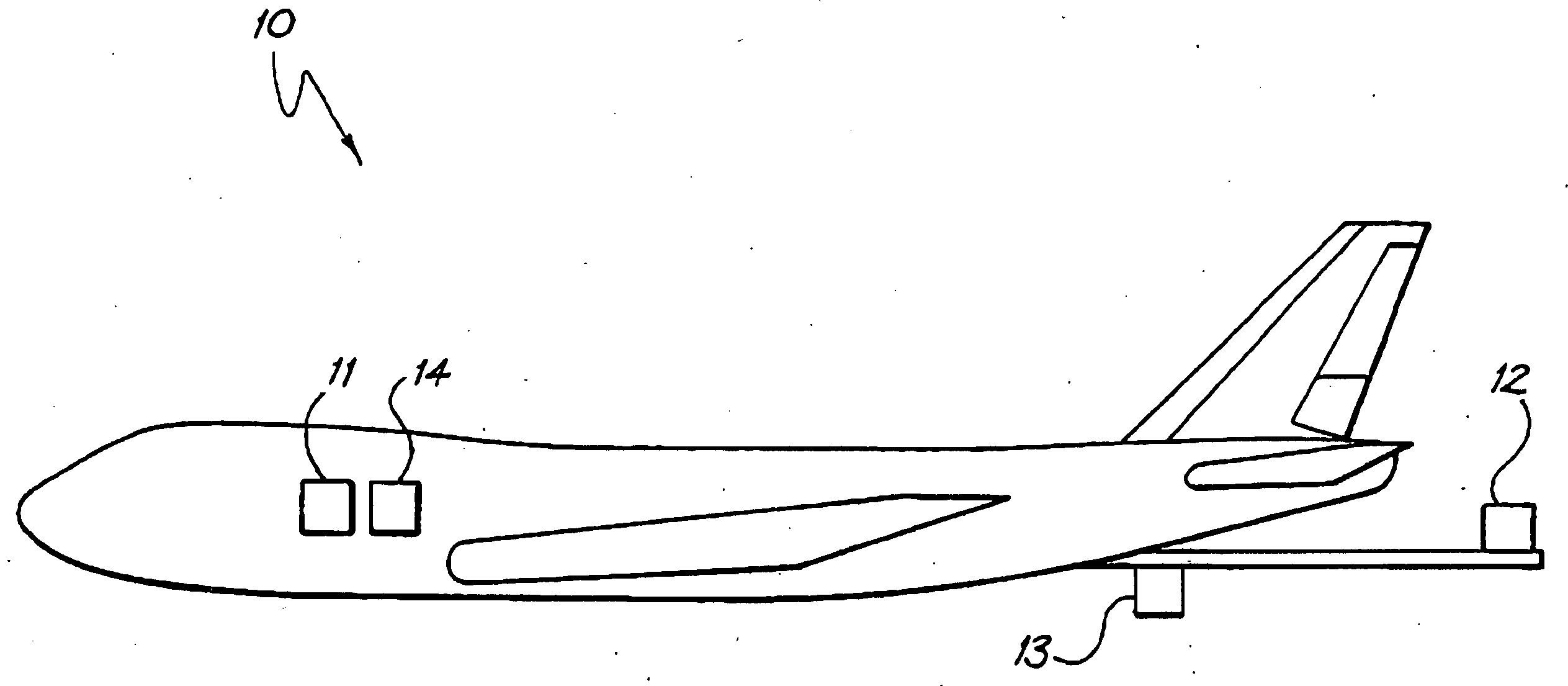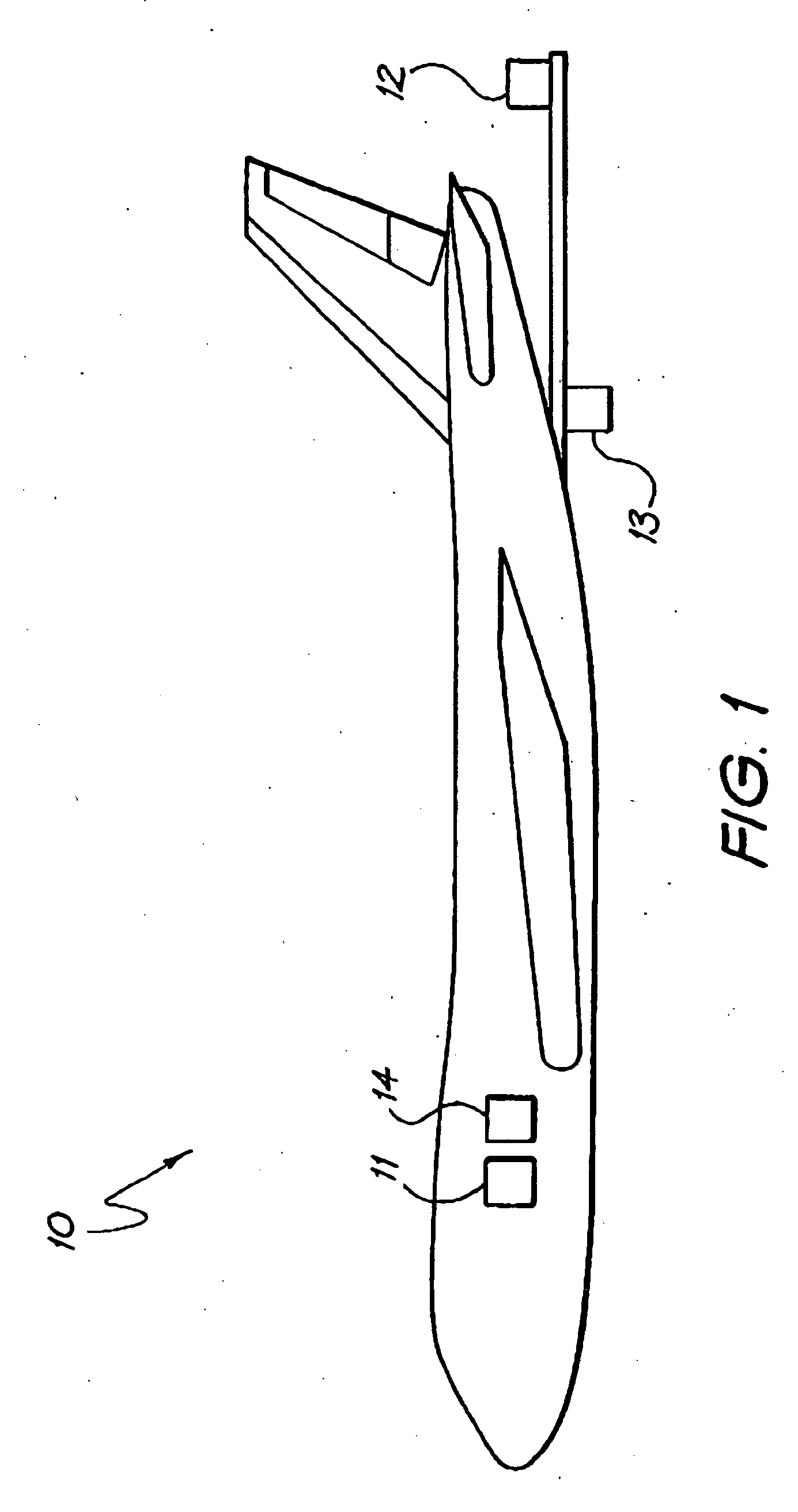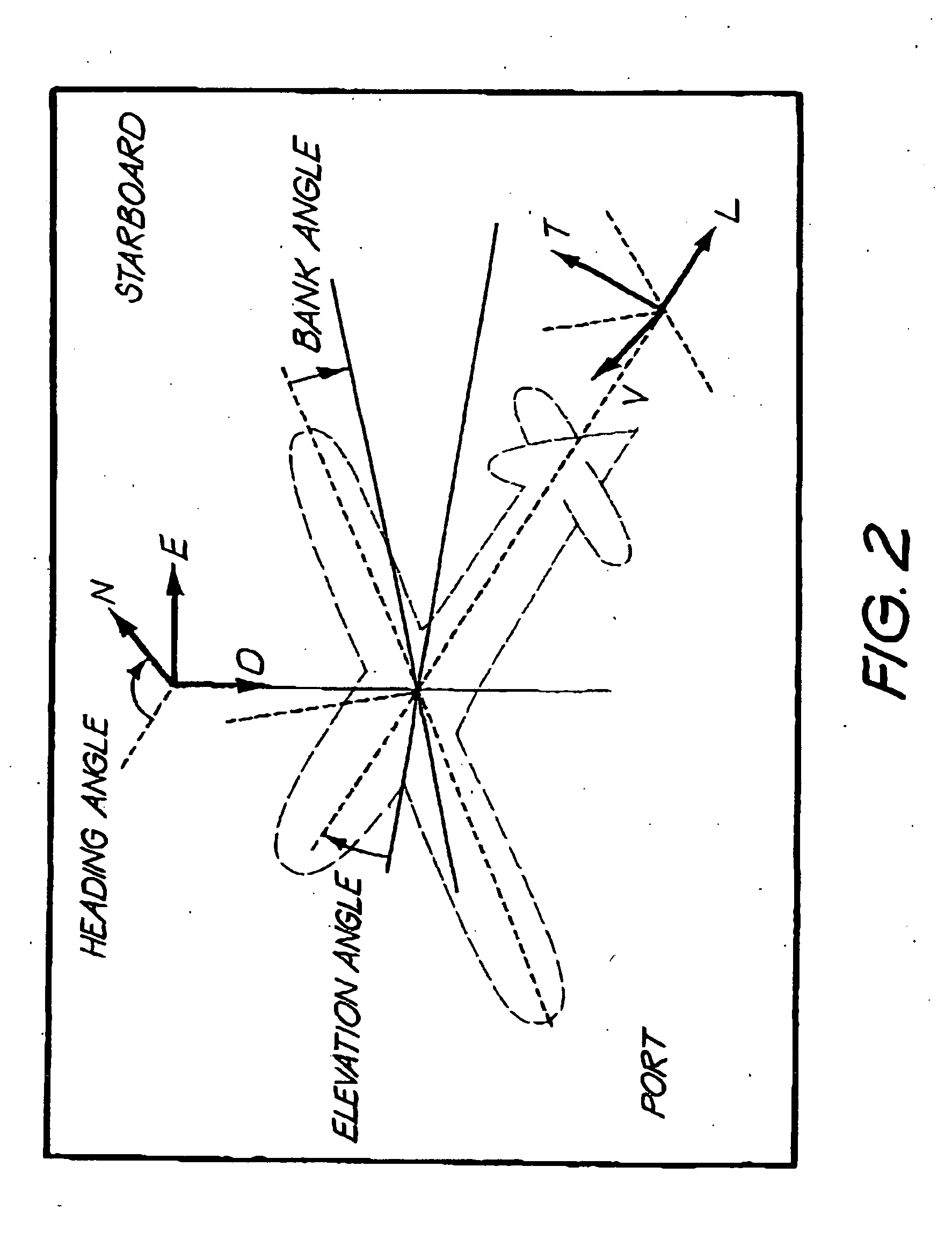Airborne vector magnetic surveys
a vector magnetic and airborne technology, applied in the field of airborne vector magnetic surveys, can solve the problems of inaccurate practice and unreliable assumption, and achieve the effects of reducing noise in vam data, excellent performance and noise reduction
- Summary
- Abstract
- Description
- Claims
- Application Information
AI Technical Summary
Benefits of technology
Problems solved by technology
Method used
Image
Examples
Embodiment Construction
[0037] The aircraft 10 carries on board an airborne gravity gradiometer (AGG) platform 11, a TMI sensor 12 to measure the total magnetic intensity, a triad of orthogonally mounted flux-gate magnetometers 13 to provide vector magnetic field data, and gyroscopes 14 mounted on the AGG platform 11 to continuously monitor and record the orientation (attitude) of the aircraft. The attitude information is used to control the platform and for laser scanner processing and self-gradient corrections of the AGG data.
[0038] The vector magnetic data has three components corresponding to the field magnitude in each of three orthogonal directions. This allows a wide variety of combinations to be formed and mapped. Examples include the components in each of the directions North, East and Down; the magnitude of the horizontal component; the inclination and declination angles; the TMI and the vector residual magnetic intensity (VRMI). The TMI should be the same as that measured by the TMI sensor and ...
PUM
 Login to View More
Login to View More Abstract
Description
Claims
Application Information
 Login to View More
Login to View More - R&D
- Intellectual Property
- Life Sciences
- Materials
- Tech Scout
- Unparalleled Data Quality
- Higher Quality Content
- 60% Fewer Hallucinations
Browse by: Latest US Patents, China's latest patents, Technical Efficacy Thesaurus, Application Domain, Technology Topic, Popular Technical Reports.
© 2025 PatSnap. All rights reserved.Legal|Privacy policy|Modern Slavery Act Transparency Statement|Sitemap|About US| Contact US: help@patsnap.com



